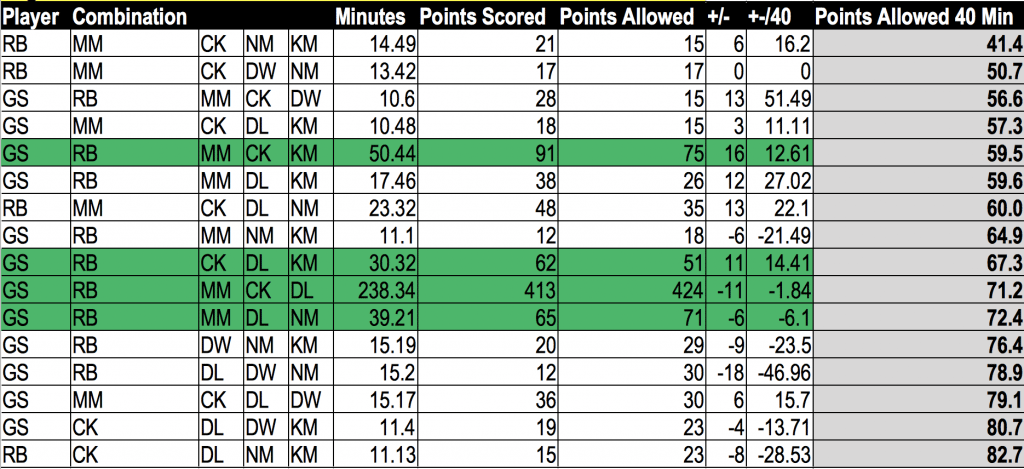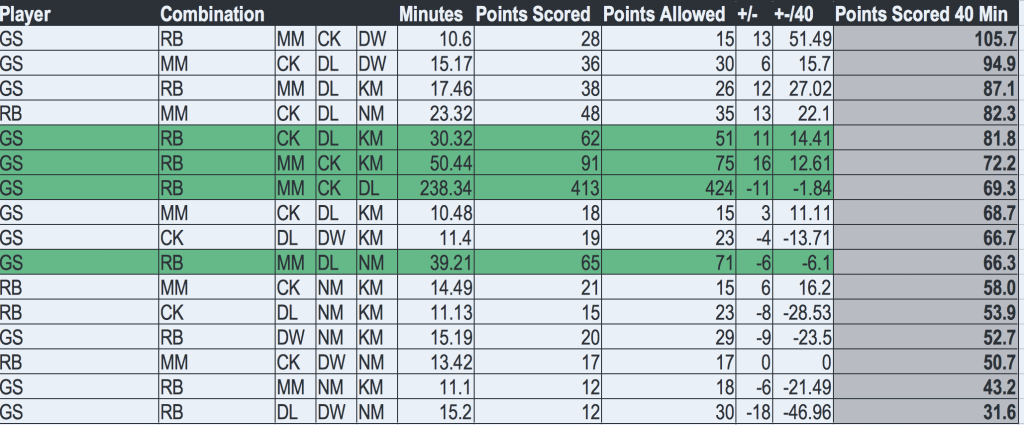In a past blog post we discussed Advanced Lineup Analysis using Scoring Differential, in this post we are going to go one step further and find our best offensive and defensive lineups. To find our most efficient lineups we need to break down the points allowed, the points scored for each lineup and the total number of minutes they played together. This data is pretty easy to find in most college stats programs. Teams that don’t have a dedicated statistician will have some manual work to do but it is definitely doable . I recommend keying on a few specific lineups that you have a gut feeling might be the most efficient rather than trying to do your whole team. I tried to do the whole team as a high school coach and there were just way too many different lineups to keep up with. Pick a few lineups that play the significant minutes and go with that.
Once we have our data we are going to want to convert the total points scored and the total points allowed to “points allowed per minute” and “points scored per minute”. Here’s how:
Using Excel, convert your time to a decimal with the built-in function. Here are some directions based on the format you chose to track time.
When you have your minutes converted to a decimal just divide the total points allowed by your minutes in decimal form. Do the same for the total points scored Here is an example of some reports I make during the season. The green rows are just groups that play together a lot.
Defensive Lineups are broken down into Points Allowed Per Minute and Points Allowed per 40 Minute (Game) You can see in this example, our best defensive lineup gave up just over one point per minute and 41.4 points if they played the entire 40 minute game.

Offensive Lineups are broken down into Points Allowed Per Minute and Points Allowed per 40 Minute (Game). In this example you can see that our best offensive unit didn’t play together much (10.6 min) but when they did they averaged over 2.5 points per minute. It’s hard to make any concrete decisions with such limited data but it does give a reason to perhaps investigate the situation by playing that group together more. Additionally, these numbers can be misleading because the few minutes this group played together could have been against a lesser opponent. You will have to find your own perspective when doing these types of analysis.

Here are a few situations where I think this data could be valuable:
- Stopping a run. If your team is getting scored on at will try your best defensive lineup for a few minutes
- Can’t buy a bucket? Try one of your best offensive lineups
- Late Game Situations – up two with ten seconds left maybe you come out of a timeout with your best defensive group?
- Proving to player that your defense sucks when they are on the floor
Can you think of any other uses?


